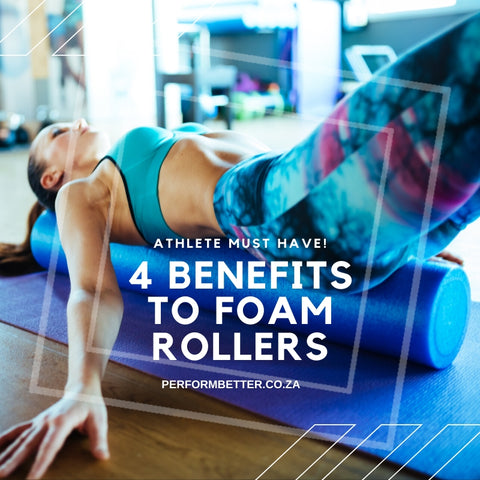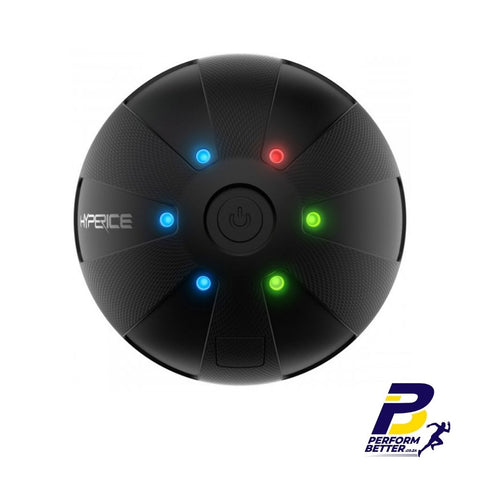News
4 Benefits to Foam Rolling
4 Benefits to Foam Rolling in your Sports War Armour
The Importance of a Foam Roller
Over the past decade, foam-rolling and trigger point release has become quite a popular topic among coaches, athletes, sport-fanatics and the average joe suffering from regular joint pain and muscle stiffness.
What is foam rolling?
Foam-rolling is a form of self-myofascial release in which you use your own bodyweight to apply pressure on a specific area of soft tissue (such as the thigh) by rolling on it with the intension of releasing myofascial tension (Cheatham et al., 2015).
Myofascial Release: Say what now?
In order to understand the concept of myofascial release, we must first have a look at the term, “Myo-fascia”. The Myo-fascia is a type of connective tissue, a thin sheath-like structure, that envelopes the muscles just as the skin envelopes the tissues beneath it, much like the plastic packet enclosing a skinless chicken breast. It extends across the entire body to provide support and protection to the muscles and bones (Krause et al., 2016; Travell & Simons, 1983).
Myofascial release involves the use of multiple modalities such as that of a practitioner's elbows, knuckles or other tools such as foam rollers or trigger-point balls (Findley et al., 2012) to slowly stretch out the tightened myofascial tissue, thus removing knots and adhesions with the aim of restoring it to its pliable nature (Ajimsa, 2011; Barnes, 1997).
Healthy myofascial tissue is soft and relaxed, but it can become tight and rigid with knots or adhesions developing in the tissue (Travell & Simons, 1983). When this occurs, it may lead to a restricted joint range of motion (Findley et al., 2012). Eventually, this gives rise to "trigger points" that can cause pain anywhere in the body. Chronic neck and back pain, muscle spasms, headaches, difficulty breathing and reduced flexibility may all be due to affected myofascial tissue. Tight myofascial tissue may be due to physical stress from exercise, hard labor or habits such as sitting for long hours in the same position as when studying. Myofascial tension may also result from emotional stress (Travell & Simons, 1983).
Benefits of foam rolling
Foam rolling confers many benefits such as increased joint range of motion (JROM), enhanced muscle performance, reduced effects of delayed onset muscle soreness (DOMS)and increased arterial and endothelial activity.
1. Increased JROM
Research suggests that foam rolling may confer short-term benefits for joint range of motion at the hip, knee and ankle with the combined approach of passive stretching furthering the effects (Mohr et al., 2015). However, there is conflicting evidence with respect to the long-term effects of foam rolling on joint range of motion (Beardsley & Skarabot, 2015).
2. Enhanced muscle performance
The application of foam-rolling to the lower extremity, after a dynamic lower body warm-up, has shown neither a positive nor negative impact on muscle performance. Because foam-rolling has a positive effect on arterial and endothelial activity, enhanced blood-flow to the active muscle after foam-rolling may reduce the possibility of muscle strain during exercise and recovery. Foam-rolling is thus a suggested to be used in conjunction with passive stretching and may even be a possible alternative (Cheatham et al., 2015).
3. Reduced effects of DOMS
Including foam-rolling to your recovery routine for about 10 to 20 minutes after doing high-intensity exercise helps reduce the effect of DOMS by means of increased pain tolerance. Perceive pain levels seem to become reduced when foam rolling or undergoing myofascial release practices regularly (Cheatham et al., 2015).
4. Reduced arterial stiffness.
Normal healthy arteries are capable of dilating (expanding) or contracting. With age, arteries tend to become more stiff and rigid giving rise to a condition known as arteriosclerosis. The stiffness of arteries is influenced by a vascular endothelial function which plays a vital role in controlling vascular activity by producing nitric oxide. Nitric oxide controls blood flow to the tissues by acting as a vasodilator or blood vessel relaxant. Arterial stiffness is a negative consequence of ageing and its development can be prevented, slowed or even reversed by application of myofascial release. (Okamoto et al., 2013).
Can’t decide which foam roller to buy? Here’s a little tip backed by some research:
Cheatham and Stull, (2017) conducted an experimental study in which they compared the density types of three foam rollers (soft, medium and hard) with the same surface pattern to identify the different effects it may have on knee range of motion and an individual’s pressure pain threshold (Cheatham et al, 2017).
Although the study proved that foam rollers aid in temporary pain relief and improved knee mobility, no significant differences were noted between the effects of the three density types. Contradictory, Curren et al. (2008) supported the notion that harder density foam rollers might be more effective.
Cheatham and Stull, (2017) contributed to the statement that, as pain is a multi-dimensional factor, pain perception and response is individualistic. From the above research, I strongly suggest that when looking to buy a foam roller, to take the time and feel them out before making the purchase.

As someone with a higher pain-threshold (a veteran in foam rolling and trigger point compression), who suffers from muscle stiffness on the regular, I definitely opt for the Trigger-Point CHARGE Foam Roller and the MB1 Massage Ball to target those gritty knots.

The Trigger-Point CHARGE Foam Roller is unique in its design with its elevated curves and high ridges measuring about 33.02cm by 13.97cm, perfect for deep-tissue compression. Complimented with the MB1 Massage Ball, which replicates the all so well-known elbow release method, you’ve got yourself quite the pain-relief combo.


Although the process can be gruelling at times, the sweet release afterwards makes it totally worth it.
Our Research References:
- Advanced Sports Performance
- Curran, P. F., Fiore, R. D., Crisco, J. J. (2008). A comparison of the pressure exerted on soft tissue by 2 myofascial rollers. J. Sport Rehabil, 17(4): 432–442.
- Cheatham, S. W., Kolber, M. J., Cain, M., Lee, M. (2015), The Effects of Self-Myofascial Release Using A Foam Or Roller Massager On Joint Range Of Motion, Muscle Recovery, And Performance: A Systematic Review. International Journal of Sports Physical Therapy, 10(6): 827–838.
- Freiwald, J., Baumgart, C., Kuhnemann, M., & Hoppe, M. W. (2016). Foam Rolling in sport and therapy — Potential benefits and risks Part 2. Sports Orthopaedics and Traumatology, 32(3): 267–275.
- Findley, T., Chaudhry, H., Stecco, A., & Roman, M. (2012). Fascia research–A narrative review. Journal of Bodywork and Movement Therapies, 16(1), 67- [PubMed]
- Barnes, M. F. (1997). The basic science of myofascial release. Journal of Bodywork and Movement Therapies, 1(4), 231-238. [Link]
- Cole, Gibwa. (2018). The Evidence Behind Foam Rolling: A Review. 3. 194-206.
- Travell, J. G., and D. G. Simons. 1983. Myofascial Pain and Dysfunction: The Trigger Point Manual. Vol. 1, Upper Body. Baltimore: Lippincott Williams & Wilkins.
- Krause F,Wilke J,Vogt L,Banzer W, Intermuscular force transmission along myofascial chains: a systematic review. Journal of anatomy. 2016 Jun
- Ajimsha M.S. Effectiveness of direct vs indirect technique myofascial release in the management of tension-type headache. J. Bodyw. Mov. Ther. 2011; 15: 431-435
- Okamoto T., Masuhara M., Ikuta K. (2013). Acute effects of self-myofascial release using a foam roller on arterial function. Journal of Strength and Conditioning Research. 28:1:69-73.
- Beardsley, C. & Skarabot, J. (2015). Effects of self-myofascial release: A systematic review. Journal of Bodywork & Movement Therapies, 19(4): 747–758.
- Mohr, A. R., Long, B. C., Goad, C. L. (2014). Effect of foam rolling and static stretching on passive hip-flexion range of motion. J Sport Rehabil, 23(4): 296–299.



